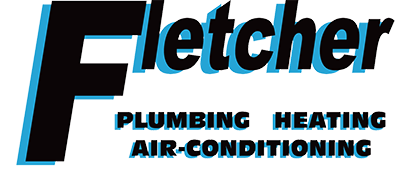
You shouldn’t be forced to sacrifice comfort or spend a lot to keep your home at a refreshing setting during summer weather.
But what is the right temp, exactly? We review ideas from energy experts so you can find the best setting for your house.
Here’s what we advise for the most energy-efficient setting for air conditioning in Smyrna.
Recommended Thermostat Settings for Summer
Most people find placing the thermostat at 72-73 degrees is ideal. However, if there’s a major difference between your indoor and outdoor temperatures, your cooling costs will be greater.
This is our advice based on the U.S. Department of Energy (DOE) and ENERGY STAR®.
While at home: 78 degrees. While that seems too high, there are approaches you can keep your home refreshing without having the air conditioning on all the time.
Keeping windows and window treatments shut during the day keeps cold air where it needs to be—inside. Some window solutions, including honeycomb shades or plantation shutters, are created to provide added insulation and enhanced energy conservation.
If you have ceiling fans in your house, the DOE says you can increase thermostat temperatures about 4 degrees hotter without sacrificing comfort. That’s because they refresh by a windchill effect. Since they cool people, not areas, turn them off when you exit a room.
If 78 degrees still feels too uncomfortable initially, try running an experiment for about a week. Start by upping your temperature to 78 degrees while you’re at your house. Then, steadily lower it while following the advice above. You could be amazed at how comfortable you feel at a higher temperature setting.
While away: 88 degrees. There’s no need to keep the AC going all day while your home is empty. Turning the temperature 7–10 degrees higher can save you anywhere from 5–15% on your cooling costs, according to the DOE.
When you get home, don’t be tempted to switch your thermostat colder than 78 to cool your residence more quickly. This isn’t productive and often produces a higher air conditioner cost.
A programmable thermostat is a helpful method to keep your settings under control, but you need to set programs. If you don’t use programs, you might forget to increase the set temperature when you take off.
If you need a handy remedy, think about installing a smart thermostat. This thermostat works with with your phone, so it is aware when you’re at home and when you’re gone. Then it automatically adjusts temperature settings for maximum savings. How much exactly? Usually $180 each year on heating and cooling, according to ENERGY STAR.
Another perk of having a smart thermostat? You can use your phone to keep an eye on and adjust temperature settings from nearly anywhere.
While sleeping: Around 70 degrees. While ENERGY STAR advises 82 degrees, that may be too uncomfortable for most families. The majority of people sleep better when their bedroom is chilled, so that’s why the National Sleep Foundation suggests 60–67 degrees. But that could be too cool, based on your pajama and blanket preference.
We suggest running a comparable test over a week, putting your temp higher and progressively decreasing it to choose the right setting for your family. On cool nights, you might find keeping windows open at night and running a ceiling fan is a preferable solution than running the air conditioning.
More Approaches to Save Energy During Hot Weather
There are additional approaches you can spend less money on utility bills throughout warm weather.
- Install an energy-efficient cooling system. Central air conditioners only are effective for about 12–15 years and become less efficient as they get older. An updated air conditioner can keep your home cooler while keeping electricity bills small.
- Schedule annual air conditioner service. Annual air conditioner maintenance keeps your unit running like it should and might help it work at better efficiency. It can also help lengthen its life cycle, since it allows pros to find little troubles before they create a major meltdown.
- Replace air filters regularly. Use manufacturer instructions for changing your air filter. A dusty filter can lead to your system short cycling, or turn on and off too much, and raise your electrical.
- Inspect attic insulation levels. Almost 90% of houses in the United States don’t have proper insulation, according to the Insulation Institute. Many southern climates need 13–14” of attic insulation, while northern climates require 16–18”.
- Have your ductwork examined. Ductwork that has loosened over time can leak conditioned air into your attic, walls or crawl space. This can result in major comfort issues in your home, like hot and cold spots.
- Seal openings, doors and windows. Keep warm air where it should be by sealing openings. You can also caulk or weather strip doors to trap more cold air indoors.
Conserve More Energy This Summer with Fletcher Plumbing, Heating & AC
If you are looking to conserve more energy during warm weather, our Fletcher Plumbing, Heating & AC professionals can assist you. Give us a call at 302-653-0503 or contact us online for extra details about our energy-saving cooling products.
